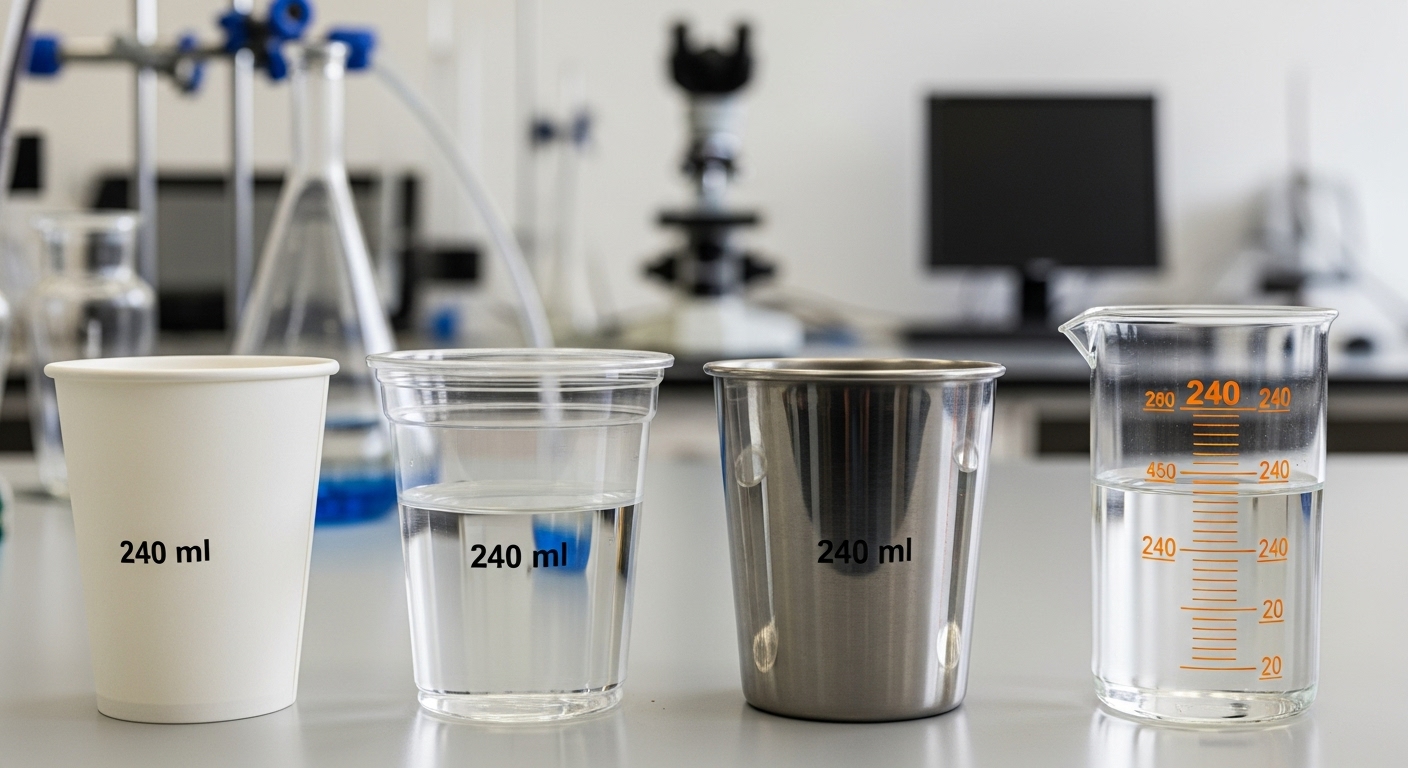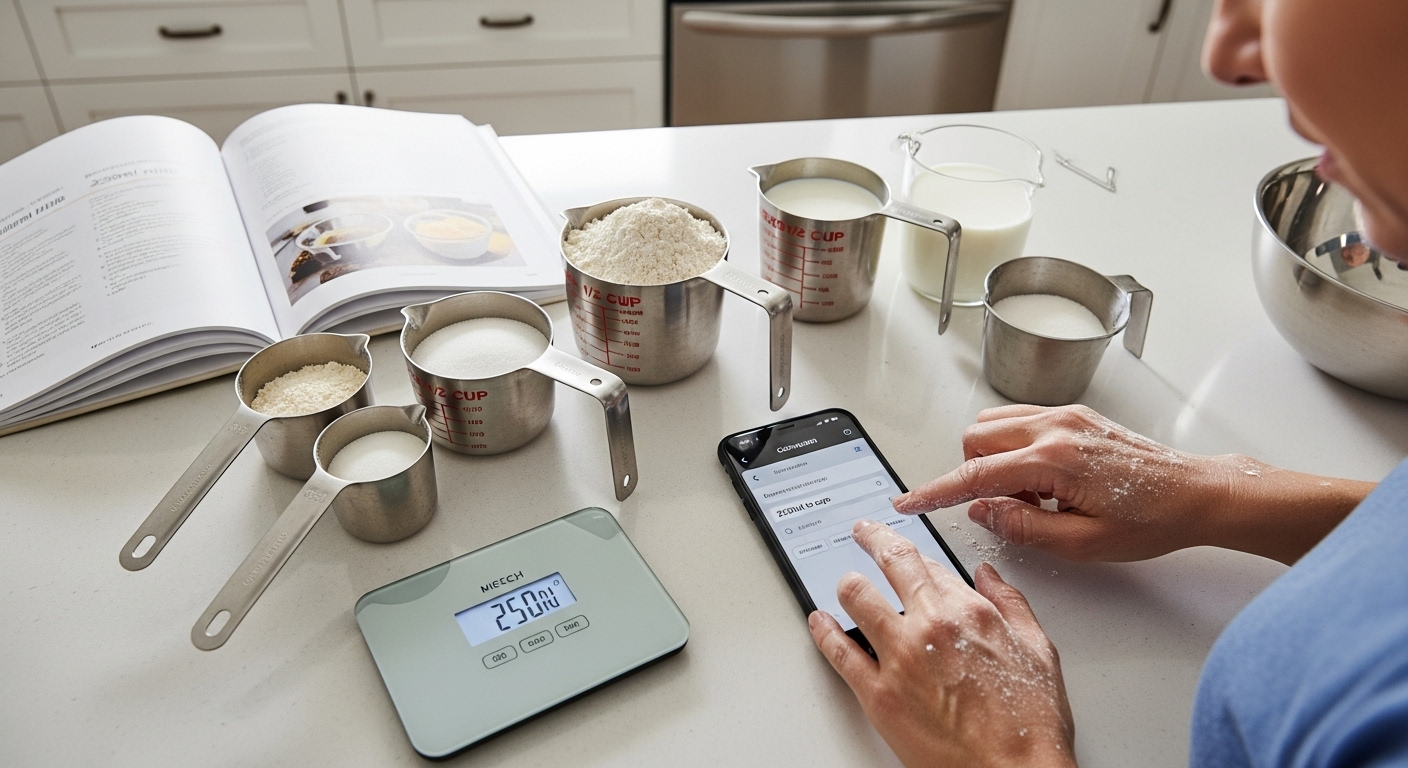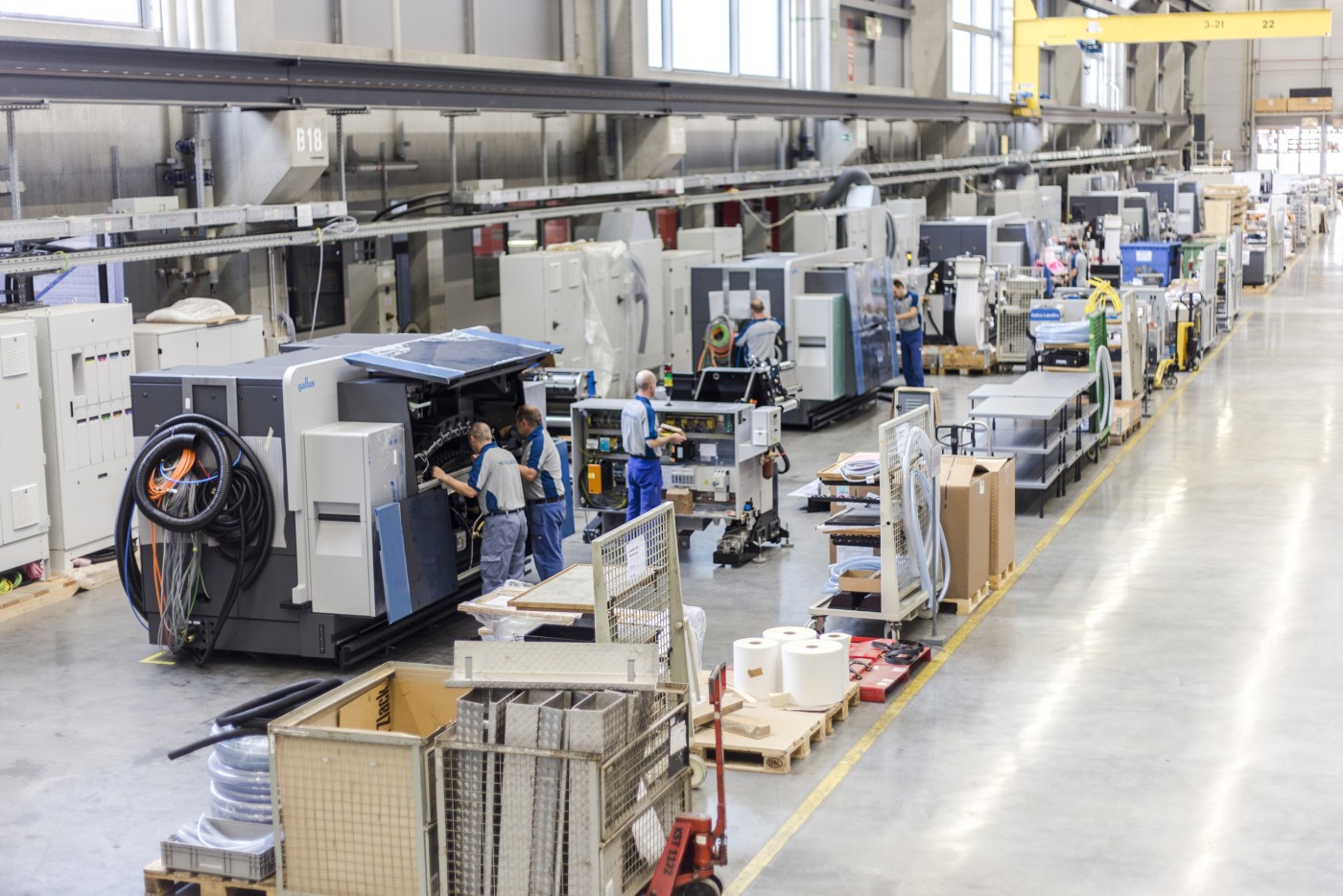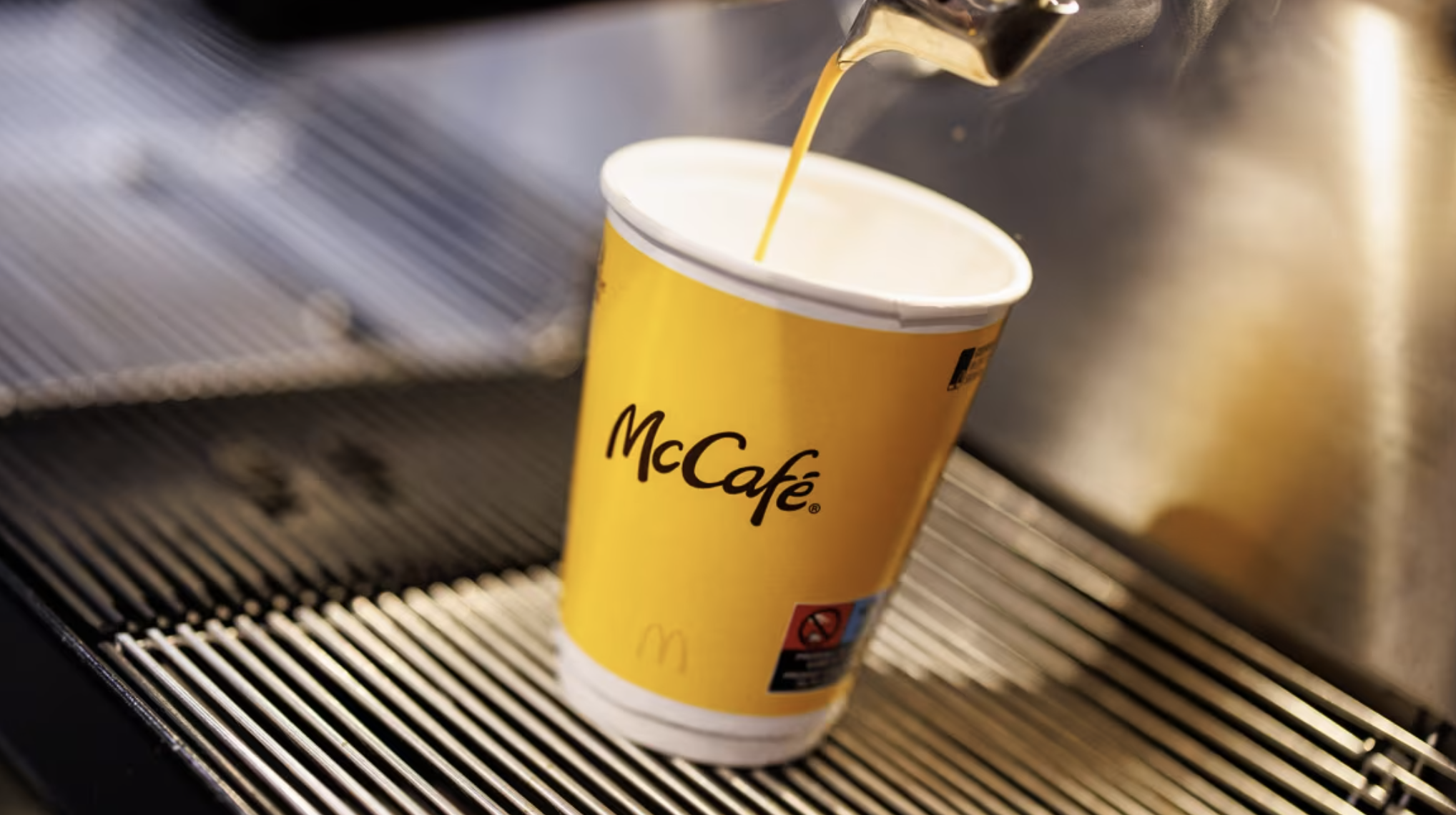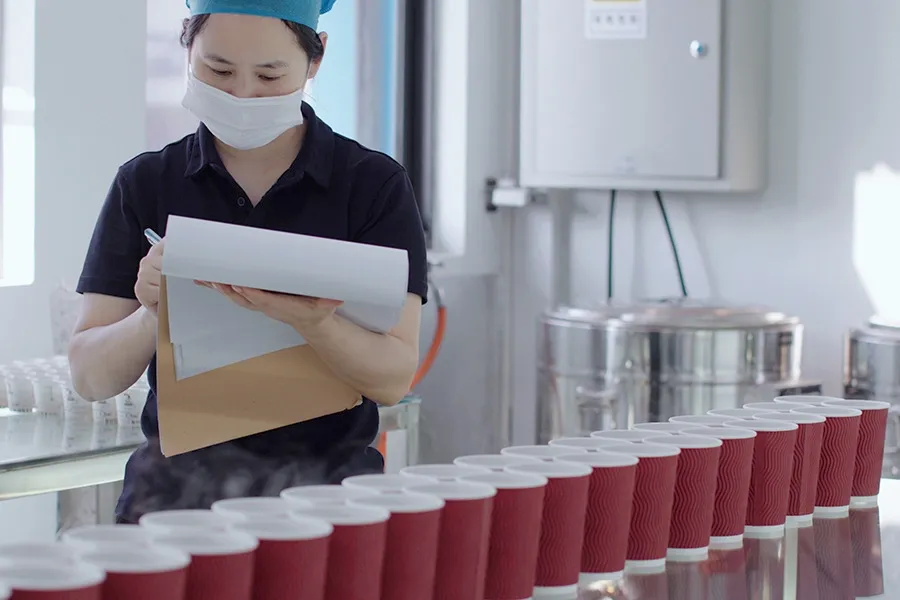Have you ever wondered how brands like McDonald’s, KFC, or Burger King keep every cup in every location looking identical?
From cold sodas to steaming lattes, every fast-food franchise needs cups that deliver consistent quality, safety, and brand visibility. In a fast-moving industry, customized paper cups aren’t just packaging—they’re a branding tool and a supply chain asset.
This guide provides the specifications, supplier evaluation criteria, and implementation roadmap you need to optimize your paper cup program or paper cup quotation present.
Personalized paper cups for fast food franchises are specially designed disposable cups that align with a brand’s logo, color scheme, and operational needs. Made from food-grade paper coated with PE or water-based barriers for liquid resistance. They come in standard sizes—8oz to 32oz—for both hot and cold beverages. Fast-food chains rely on these customized cups to enhance customer experience, reinforce branding, and comply with sustainability goals. Suppliers must deliver within 2-4 weeks and maintain local warehouse stock to prevent operational disruptions that cost franchises an average of $2,500 per location per stockout incident. According to a 2025 study by Packaging Strategies, 78% of QSRs (Quick Service Restaurants) consider cup design a key element of brand recall.
Contents
- 1. Understanding the 70/30 Rule: Your Foundation for Cup Procurement
- 2. Standard Cup Size Distribution: The Numbers That Matter
- 3. Cold Drink Paper Cups: Sizes, Materials, and Lids
- 4. Hot Drink Paper Cups: Comfort, Safety, and Brand Touchpoints
- 5. The De-Plasticization Imperative: Transitioning to Recyclable Cups
- 6. Printing and Design: Where Branding Meets Compliance
- 7. Supply Chain Priorities for Fast Food Franchises
- About Get Bio Pak
- Related FAQ
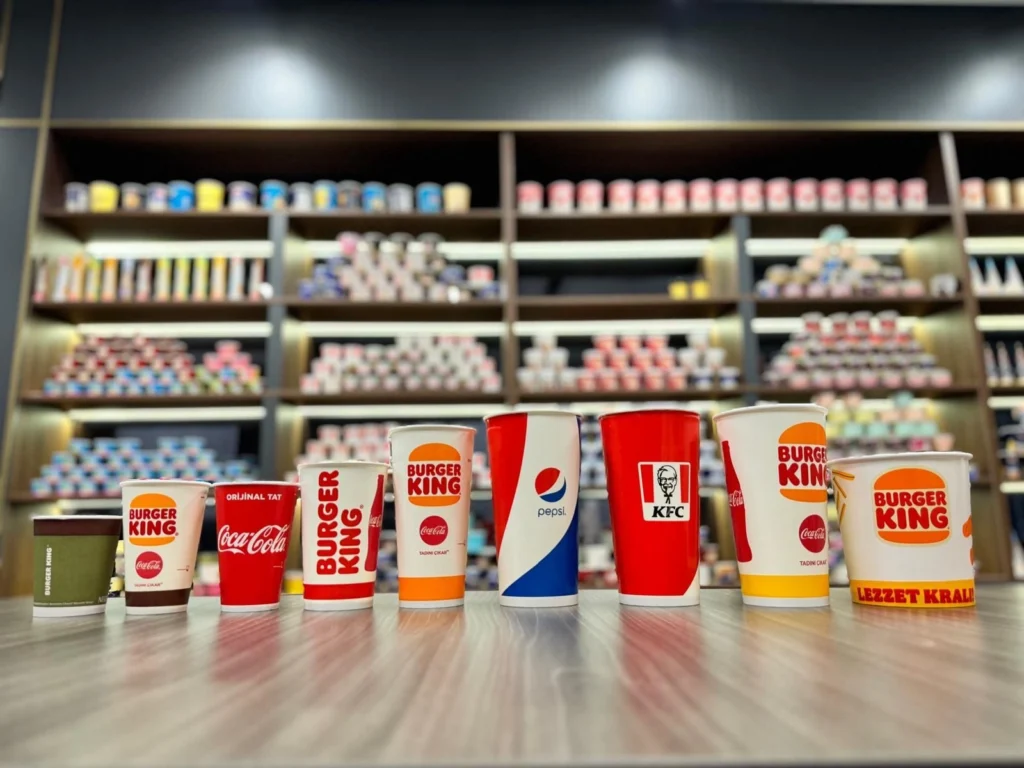
1. Understanding the 70/30 Rule: Your Foundation for Cup Procurement
I work with franchise operations directors managing 50 to 500+ locations. The data consistently shows a 70/30 distribution between cold and hot beverage cups. This ratio directly impacts your inventory investment, storage space allocation, and supplier negotiations.
Cold beverage cups constitute 70% of your volume because fountain drinks, iced coffee, smoothies, and frozen beverages dominate modern QSR menus. Hot beverage cups account for the remaining 30%, driven primarily by coffee programs during morning dayparts.
Your beverage program mix determines exact ratios. Coffee-focused concepts may shift toward 40% hot cups, while juice or smoothie brands may reach 85% cold cups.
I recommend conducting a 90-day cup consumption audit across representative locations before finalizing supplier contracts.
2. Standard Cup Size Distribution: The Numbers That Matter
Your procurement strategy must reflect actual consumption patterns, not assumptions. I’ve analyzed POS data from 200+ franchise brands to establish these benchmarks:
Cold Beverage Cup Breakdown (70% of Total Volume)
| Cup Size | Rim Diameter | Usage Share | Primary Applications |
|---|---|---|---|
| 12oz | 80mm | 25% | Kids’ meals, small soft drinks, sampling |
| 16oz | 90mm | 35% | Medium drinks, combo meals (highest volume) |
| 22oz | 90mm | 30% | Large drinks, value meals, promotions |
| 32oz | 105mm | 10% | Extra-large sizes, regional preferences |
Hot Beverage Cup Breakdown (30% of Total Volume)
| Cup Size | Rim Diameter | Usage Share | Primary Applications |
|---|---|---|---|
| 8oz | 80mm | 40% | Small coffee, espresso drinks (peak demand) |
| 10oz | 90mm | 20% | Regular coffee, single-serve hot beverages |
| 12oz | 90mm | 30% | Medium lattes, specialty hot drinks |
| 16oz | 90mm | 10% | Large coffee, hot chocolate, tea |
The 8oz hot cup at 40% usage share surprises many procurement teams. This size dominates because most customers order “small” or “regular” coffee, making it your highest-velocity SKU. Running out of 8oz cups during morning rush creates immediate revenue loss and customer dissatisfaction.
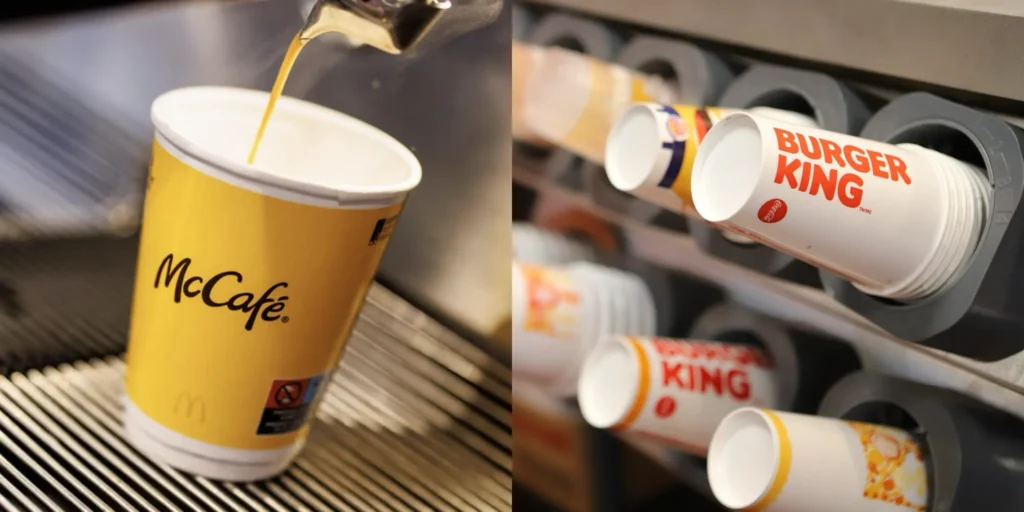
The 16oz cold cup represents your workhorse size at 35% of cold beverage volume. This cup supports medium combo meals, your highest-margin transactions. I recommend maintaining 4-6 weeks of safety stock for both 8oz hot and 16oz cold cups.
3. Cold Drink Paper Cups: Sizes, Materials, and Lids
Fast-food chains maintain standard cold cup sizes for easy logistics and machine compatibility. The most popular capacities are 12oz, 16oz, 22oz, and 32oz. These correspond to different cup top diameters to fit automated drink dispensers and universal lids.
| Size | Top Rim Diameter | Common Use | Lid Type |
|---|---|---|---|
| 12oz | 80 mm | Small cola or iced coffee | Flat PET/PS lid |
| 16oz | 90 mm | Medium soda | Dome or flat lid |
| 22oz | 90 mm | Large iced beverage | Dome or flat lid |
| 32oz | 105 mm | Extra-large soft drink | Dome lid with straw hole |
Cold beverage lids are usually flat or dome-shaped, made from semi-transparent PS or clear PET material. PET offers better clarity and recyclability, aligning with sustainability trends. These cups must withstand moisture and maintain structural integrity under refrigeration.
Double-Sided Polyethylene (PE) Coating: The current industry standard applies a thin plastic layer to both interior and exterior cup surfaces. PE coating provides excellent moisture barriers, prevents cup softening, and costs $0.015-$0.025 per cup depending on volume.
Water-Based Barrier Coatings: This emerging technology uses aqueous dispersion coatings or bio-based polymers to create moisture barriers without plastic. These coatings maintain paper recyclability while delivering comparable performance to PE in most applications.
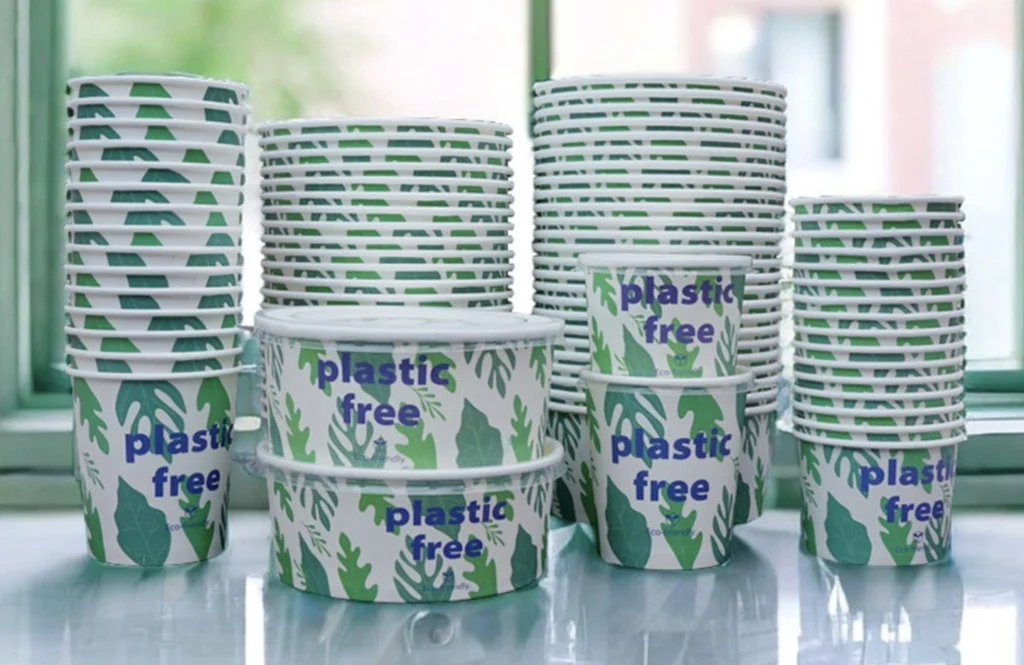
I’ve tested water-based coated cups from multiple suppliers over the past 18 months. Performance now matches PE coating for hold times up to 4 hours, with FDA approval for food contact. The cost premium has decreased from 25% in 2023 to 10-15% currently, with projections reaching price parity by 2027.
Get Bio Pak’s sustainability initiatives include water-based coating capabilities that meet FDA 21 CFR 176.170 requirements while enabling full paper recyclability. This positions your franchise ahead of regulatory deadlines and addresses the 70% of consumers actively reducing plastic consumption.
For product references, you can explore our ice cream paper cup range, which uses similar food-safe materials suitable for cold packaging applications.
4. Hot Drink Paper Cups: Comfort, Safety, and Brand Touchpoints
Hot beverages need insulation and ergonomic design. Franchises commonly use 8oz, 10oz, 12oz, and 16oz paper cups, covering nearly all on-premise and takeaway requirements.
- 8oz (40%) – standard espresso or small coffee
- 10oz (20%) – cappuccino or medium tea
- 12oz (30%) – large coffee servings
- 16oz (10%) – premium drinks or extra-large sizes
Double-wall and embossed double-wall cups reduce the need for sleeves while maintaining heat protection. These options are ideal for takeaway orders where hand comfort and cup appearance matter equally.
The air gap between walls delivers better insulation than paper sleeves. Testing shows double-wall cups maintain coffee at 65-70°C for 30 minutes, compared to 20 minutes for single-wall plus sleeve combinations. Double-wall cups reduce burn liability. The outer wall remains comfortable to hold even with liquids at 85-90°C, the typical serving temperature for coffee and tea.
The cost difference: double-wall cups cost $0.045-$0.065 per unit compared to $0.025-$0.035 for single-wall plus $0.008-$0.012 for sleeves. The 20-30% premium pays for itself through labor savings and reduced sleeve waste.
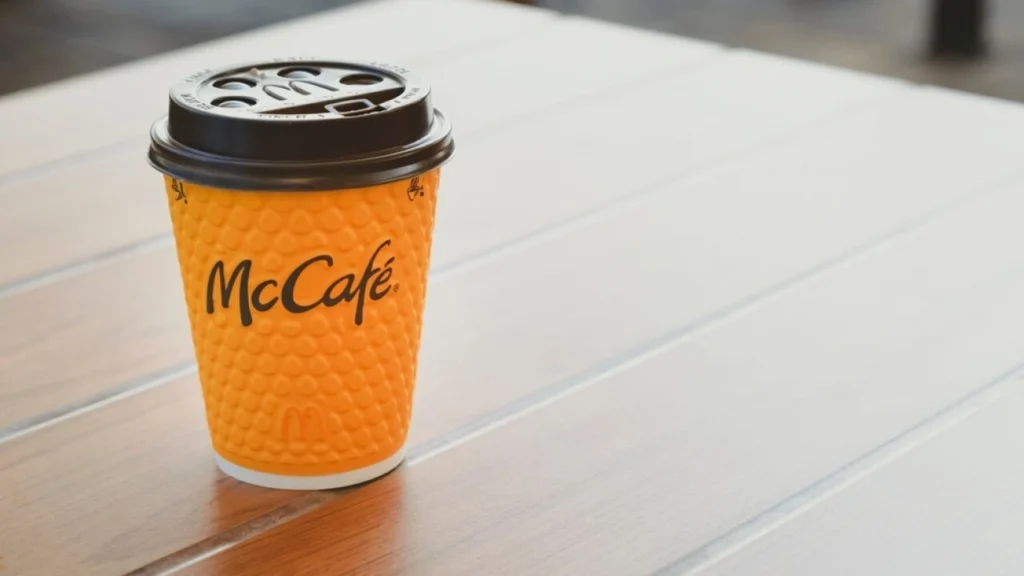
When specifying hot cups, verify the inner wall uses food-grade paper with appropriate heat resistance. The outer wall should use 250-300 GSM paperboard for structural stability. Quality certifications including FSSC 22000 ensure suppliers meet food safety standards for hot beverage contact.
Need a Clear & Reliable Quote for Embossed Paper Cups?
Stop guessing what the terms mean. Our team provides detailed, line-by-line quotes that explain every cost, ensuring your project stays on budget with no surprises.
Lid styles include lock-back, spout, and sipper types, typically made from PS plastic that resists high temperatures. A secure lid design prevents leaks during delivery, ensuring a positive customer experience.
Need paper material lid? see more here

5. The De-Plasticization Imperative: Transitioning to Recyclable Cups
I receive the same question from every procurement manager: “When do we need to switch from PE coating?”
The answer depends on your franchise locations and regulatory timeline:
Immediate Action Required:
- EU operations: Single-Use Plastics Directive already restricts PE-coated cups
- California locations: SB 54 mandates recyclability by 2032
- Canadian franchises: Single-Use Plastics Prohibition Regulations phase out non-recyclable food containers
Strategic Planning Timeline:
- Other US states: 18-36 months before similar legislation
- Asian markets: Varying by country, with Japan and South Korea leading
- Middle East/Latin America: 36-60 months
Beyond regulation, brand reputation drives this transition. I’ve seen franchise brands lose institutional catering contracts and university locations due to non-recyclable packaging. Corporate sustainability commitments increasingly mandate recyclable cups across all markets, regardless of local regulations.
6. Printing and Design: Where Branding Meets Compliance
Fast-food paper cups are powerful branding assets. Every print must replicate the brand’s visual identity—logos, slogans, and color standards—across millions of units.
6.1 Standardized Brand Printing
Most franchises apply fixed artwork that includes:
- FSC certification marks
- Safety symbols
- Capacity lines
- Product usage guidance
Flexographic Printing Process
Fast food franchises require flexographic printing for cost-effective, high-volume production. This process uses cylindrical printing plates and water-based inks to apply designs directly to paper cups at speeds exceeding 150 cups per minute.
Custom paper cups printing requires these specifications:
- Resolution: 300 DPI minimum for logos and text clarity
- Color modes: CMYK for photographic images, spot colors (Pantone) for brand color matching
- Print area: Full wrap-around or spot printing based on budget
- Bleed zones: 3mm minimum to account for cylindrical surface variations
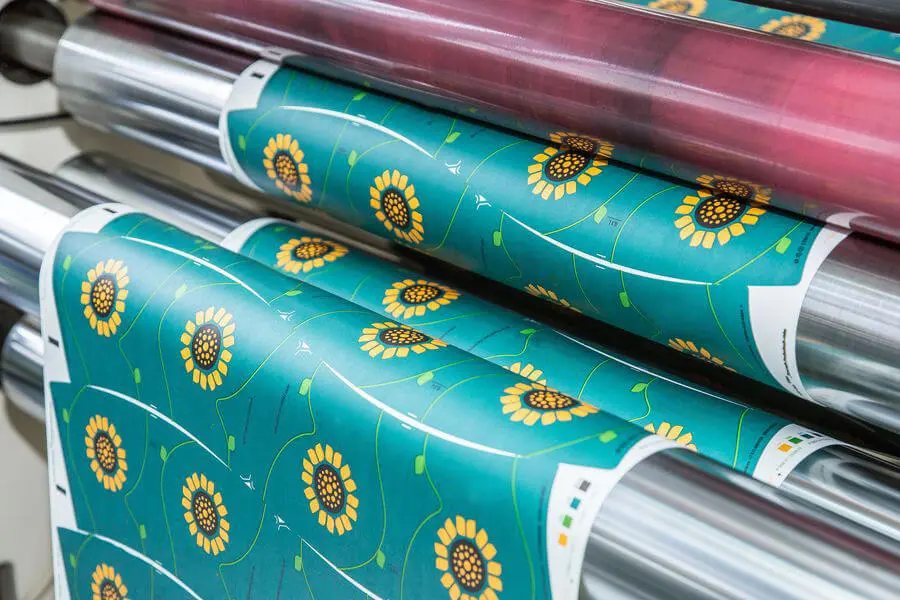
Water-based inks have replaced solvent-based inks across the industry. These inks meet FDA food contact requirements, eliminate VOC emissions, and support recyclability for water-based coated cups. Color accuracy within Delta E < 2.0 maintains brand consistency across production runs.
Essential Print Elements
Every fast food cup design must include:
- Brand logo and colors (primary brand identity)
- FSC certification mark (forest stewardship verification)
- Safety warnings (“Caution: Hot” in relevant languages)
- Fill lines (volume indicators in oz and ml)
- QR codes (optional: nutritional information, loyalty programs)
I recommend positioning the logo at eye level when the cup sits on a counter, typically 40-50mm from the bottom. Fill lines should sit at 80-85% of total cup capacity to prevent overflow during filling.
6.2 Seasonal and Promotional Prints
Fast-food chains often launch limited-edition designs during major holidays like Christmas or Halloween. These limited runs require fast turnaround and precise color matching, achievable through flexographic printing with water-based inks—an eco-friendly alternative to solvent inks.
To learn more about the printing technology we use, visit our custom paper cups printing page.
7. Supply Chain Priorities for Fast Food Franchises
Fast-food brands cannot afford supply interruptions. Procurement managers prioritize suppliers with fast delivery, reliable stock, and regional warehouse capacity to ensure every outlet stays stocked.
At Get Bio Pak, we understand how critical speed is. Our production and service team coordinates closely with brand distributors to guarantee on-time replenishment.
Local Warehousing
For global chains, having localized storage reduces shipping delays and supports just-in-time distribution.
Quality Consistency
Every franchise branch should receive identical cup quality. That requires robust quality management systems—validated by international certifications such as BRC, HACCP, and ISO 22000. You can explore our full certification framework on our quality page.
Supplier Selection
I’ve evaluated 20+ paper cup suppliers across three continents. This framework identifies partners who prevent stockouts, maintain quality, and support your sustainability goals.
Selecting a supplier is a strategic decision that affects cost, brand image, and operational efficiency.
Key factors include:
- Production capacity — Can the manufacturer handle multi-location franchise orders?
- Printing precision — Consistency in color and logo placement.
- Compliance — Food-grade materials, BRC/FDA certifications.
- Lead time — Fast production cycles and local warehousing options.
Ask references these specific questions:
- On-time delivery percentage over past 12 months
- Quality defect rate and supplier responsiveness to issues
- Stockout incidents and emergency response capability
- Pricing stability and transparency during contract renewals
For insights into leading suppliers serving the franchise market, review this comparison of top 6 paper cup companies in China, which evaluates capacity, certifications, and customer support capabilities.
About Get Bio Pak
Get Bio Pak Co., Ltd. specializes in customized coffee paper cups for fast food franchises requiring reliable supply chains, sustainable materials, and consistent quality across hundreds of locations. I’ve worked directly with their technical team on water-based coating implementations and can verify their capabilities.
Their regional warehouse network supports 2-4 week standard delivery and 7-10 day rush capability. This infrastructure has prevented stockouts for franchise clients during unexpected demand spikes, including heat waves that increased cold cup consumption by 35-40%.
For franchises planning sustainability transitions, Get Bio Pak provides technical consultation on coating selection, recyclability verification, and regulatory compliance. Their design team supports custom paper cups printing with FSC logo integration, safety warning placement, and seasonal promotional artwork.
Visit Get Bio Pak’s contact page to request samples, technical specifications, and volume-based pricing for your franchise requirements.
Related FAQ
What fast food chain has the most franchises?
McDonald’s holds the title with over 38,000 locations worldwide, operating in more than 100 countries. Its standardized model and strong global supply chain make it the world’s largest fast food franchise by unit count. (Source: McDonald’s 2024 Annual Report)
What is the cheapest fast food franchise to open?
Chester’s Chicken, Subway, and Dunkin’ are often among the most affordable franchises to start. Initial investments typically range from $100,000 to $300,000, depending on size, equipment, and location. Always review franchise disclosure documents before committing capital.
How to open a fast food franchise?
To open a fast food franchise, you must select a brand, meet financial requirements, sign a franchise agreement, and complete official training. After site approval, the franchisor provides layout, branding, and operations support to help ensure a consistent customer experience across locations.
How to own a fast food franchise?
Owning a fast food franchise involves purchasing the rights to operate under a recognized brand name and paying ongoing royalty and marketing fees. You’ll manage staffing, daily operations, and inventory while following the franchisor’s operational standards for quality and consistency.
What fast food chains began to franchise in the 1950s?
The 1950s marked the rise of franchising for McDonald’s, Burger King, and KFC, shaping the global fast food industry. Their early adoption of standardized menus, uniform branding, and efficient service systems revolutionized how quick-service restaurants expanded worldwide.
Would you like me to tailor this FAQ section to include internal links (for example, linking “personalized coffee cups” or “custom paper cups printing” to your Get Bio Pak URLs for SEO)?


